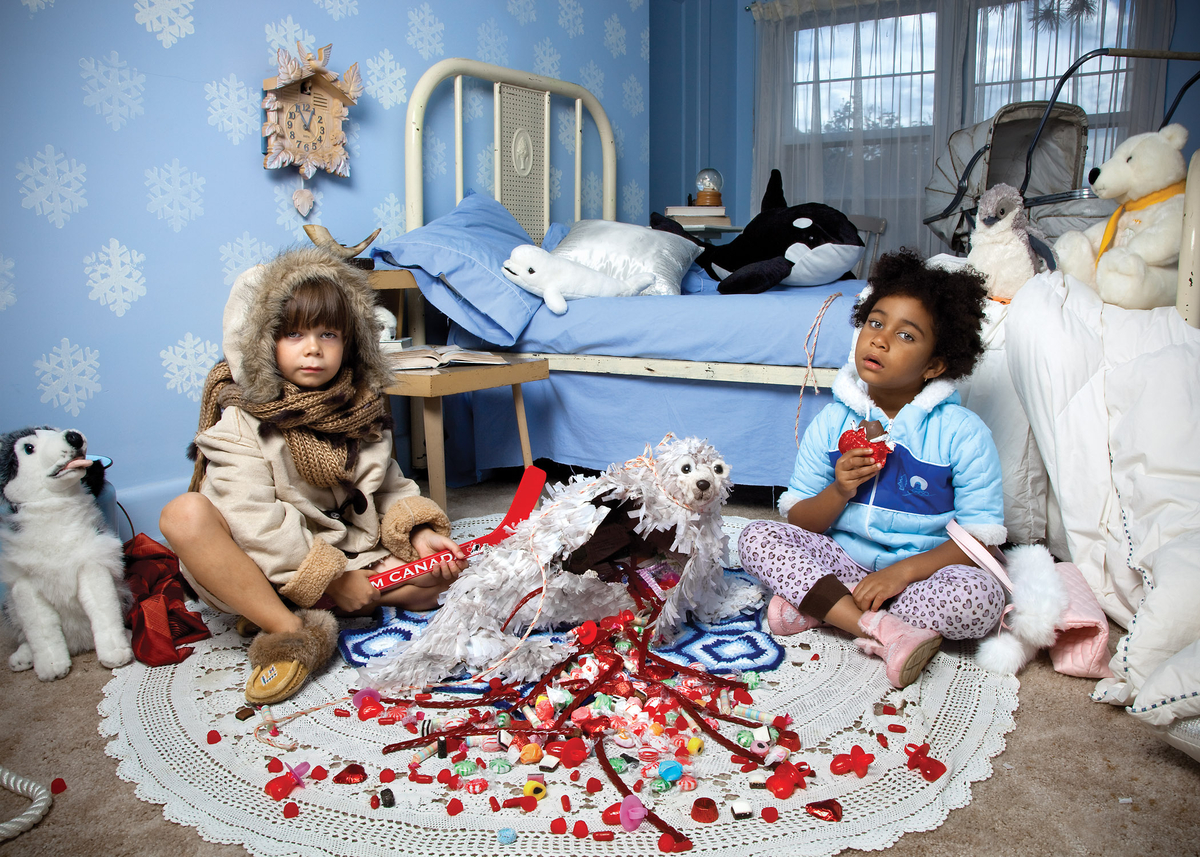SOLD. Jonathan Hobin ‘In The Playroom’ Photograph, 2009
Jonathan Hobin ‘In The Playroom: Seal Heart’, Signed Limited Edition Color Photograph, Private Collection, The Riviera, Ottawa, Canada
42” x 59”
PRINT MEDIA: Chromogenic Print
PRESS:
‘The kids are not all right’
MORE:
‘In the Playroom’ is photo-based artist, Jonathan Hobin’s ongoing series of large-scale, colour photographs that depict children re-enacting significant world events such as the attack on the World Trade Center, the murder of child beauty-queen JonBenét Ramsey, and the torture of prisoners at Abu Ghraib. The series comments on the impossibility of maintaining a space for children that is protected from the reach of modern media. The quizzical disposition of youth and the pervasiveness of the news are represented in these tableau-vivant re-enactments of the traumas that a parent might wish to keep separate from their child’s world. Just as children make a game of pretending to be adults as a way to feel prepared for these roles later in life, so too do they explore the difficult information that they hear or see through role-play. Whether or not children completely understand the magnitude of an event such as 9/11, or the implications of their play, their willingness to confront catastrophe, as imagined by Hobin, critiques cultural assumptions about the innocence of childhood. The Gladstone Hotel’s iteration of In the Playroom will include several new works in this polarizing series.
SEE CATALOGUE:

